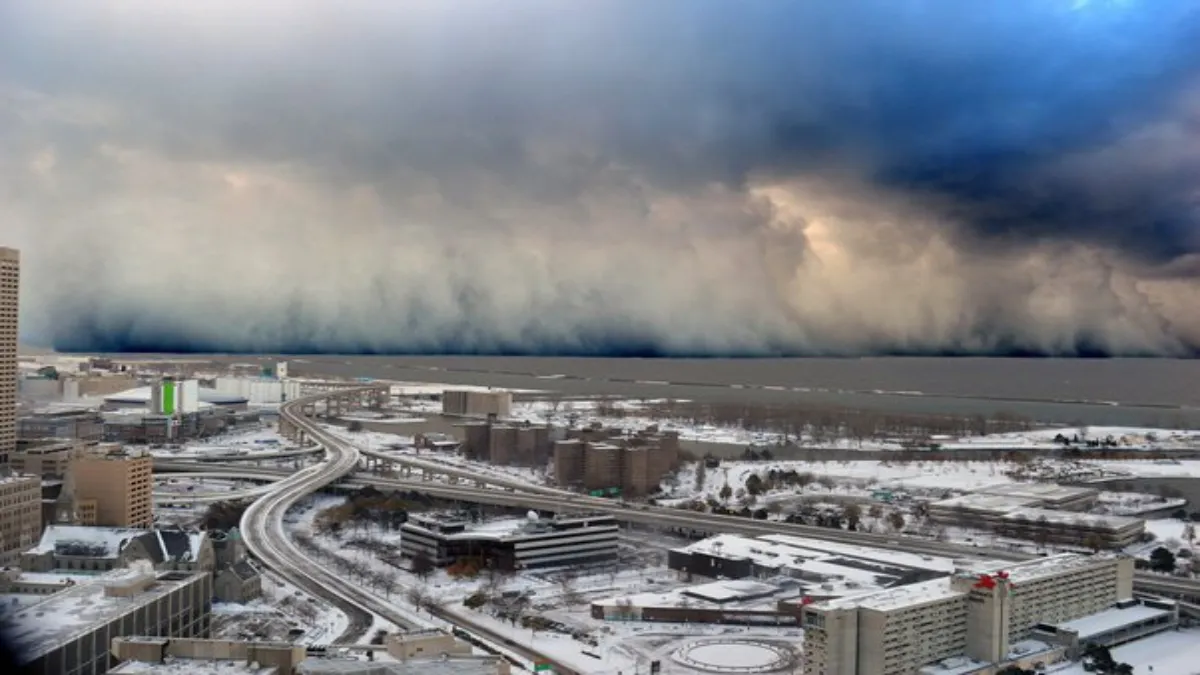Winter’s enchanting landscapes often come with unpredictable weather, and one of nature’s surprises is the snow squall. Characterized by a sudden burst of intense snowfall and strong winds, snow squalls can create hazardous conditions. To ensure your safety during these brief but intense storms, it’s crucial to be prepared and take proactive safety measures.
ALSO READ: How dangerous are snow squalls?
- Stay Informed
The first step in ensuring safety during a snow squall is to stay informed about weather conditions. Pay attention to weather forecasts, especially during the winter months, and be aware of any snow squall warnings issued by meteorological agencies. The National Weather Service and other local authorities provide timely alerts to help you prepare for and respond to these sudden storms.
- Limit Travel
If a snow squall warning is in effect, consider limiting or avoiding travel, especially on the roads. Snow squalls can drastically reduce visibility, making driving treacherous. If travel is unavoidable, plan your trip with extra time, stay informed about road conditions, and choose alternative routes if necessary.
- Be Prepared for Reduced Visibility
Snow squalls can quickly create whiteout conditions, severely limiting visibility. If you find yourself on the road during a squall, reduce your speed, turn on your headlights, and use low-beam lights to enhance visibility. Maintain a safe following distance from the vehicle in front of you, and avoid sudden maneuvers.
- Pull Over if Necessary
In cases of extremely low visibility or dangerous road conditions, it’s advisable to pull over to a safe location and wait for the snow squall to pass. Choose a well-lit area, such as a parking lot, and turn on your hazard lights to make your vehicle more visible to others on the road. Wait until conditions improve before continuing your journey.
- Keep a Winter Emergency Kit
Having a well-equipped winter emergency kit in your vehicle can be a lifesaver during a snow squall or any winter-related emergency. Include items such as blankets, extra clothing, non-perishable food, water, a flashlight, a first aid kit, and a portable phone charger. These essentials can provide comfort and assistance if you’re stranded or facing delays.
- Dress Appropriately
If you need to venture outside during a snow squall, dress warmly and in layers. Cold winds accompanying the squall can make temperatures feel even colder, so wear insulated and waterproof clothing to stay dry. Ensure that extremities like hands, feet, and face are adequately covered to protect against frostbite.
- Monitor Your Surroundings
Keep an eye on your surroundings during a snow squall. Falling snow and gusty winds can create hazardous conditions, such as snow-covered or icy surfaces. Watch for signs of accumulating snow and be cautious of any potential hazards, such as falling branches or power lines.
READ MORE: What are snow squalls?
While snow squalls may be transient, their potential impact on safety is not to be underestimated. By staying informed, limiting travel when necessary, and taking proactive safety measures, you can navigate these winter storms with confidence. Whether on the road or at home, being prepared ensures that you can weather the storm and emerge safely on the other side.

